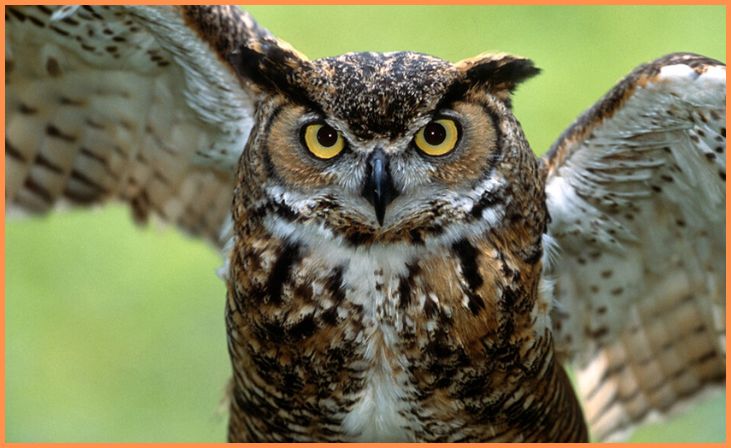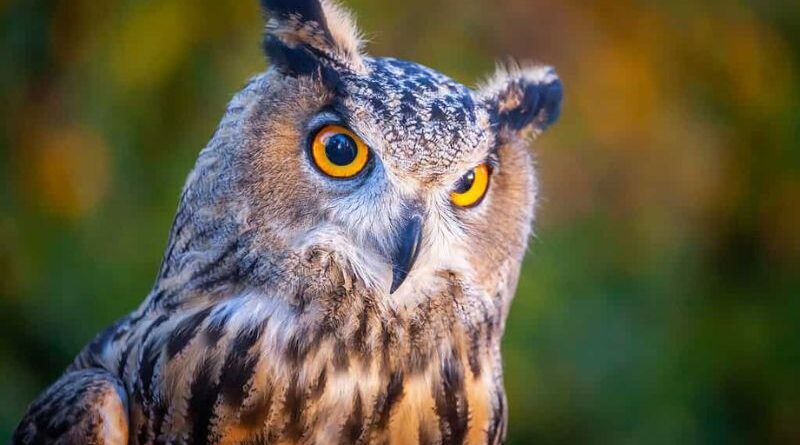Things You Didn’t Know About Great Horned Owls – Great Horned Owls, with their majestic appearance and mysterious nocturnal habits, captivate the imagination of nature enthusiasts worldwide. Found throughout the Americas, these formidable birds of prey possess unique traits often overlooked. Characterized by an impressive wingspan and distinctive ear tufts, they navigate the night sky with silent efficiency. Their hunting prowess, marked by powerful talons and a diverse diet, includes surprising abilities to tackle larger prey. Nesting in various environments, from urban areas to remote forests, these owls exhibit fascinating courtship rituals and communicate through an array of vocalizations. Beyond biology, they hold cultural significance in folklore and mythology. However, challenges such as habitat loss and human-related threats impact their existence, underscoring the need for conservation awareness. This exploration unveils lesser-known aspects of Great Horned Owls, shedding light on their ecological importance and captivating behaviors.
Things You Didn’t Know About Great Horned Owls
Adaptability

Great Horned Owls are remarkably adaptable, thriving in diverse habitats, from forests to urban areas. Their broad diet includes small mammals, birds, and larger prey like rabbits. During breeding, they exhibit territorial behavior, engaging in hooting contests to establish dominance. Known for silent flight, specialized feathers reduce noise during hunting. Their powerful talons crush prey skulls or spines. Besides classic hooting, they produce various vocalizations for communication. Notably, they nest early, starting in December or January, gaining an advantage in resource availability. Devoted parents, both share responsibilities, and owlets stay for months, learning essential skills before independence.
Also, Read – 10 Most High Maintenance Dog Breeds
Territorial Behavior
Great Horned Owls display intense territorial behavior, especially during the breeding season. Aggressively defending their territory, they engage in hooting contests with neighboring owls. These contests involve vocal displays to establish dominance in the area. The owls use a variety of calls, including hoots, hisses, screams, and clucks, for communication during these territorial disputes. This behavior is crucial for securing breeding and hunting grounds, ensuring the availability of resources for raising their young. The territorial nature of Great Horned Owls plays a significant role in their overall breeding success and survival in a given habitat.
Silent Flight
Great Horned Owls possess a remarkable ability for silent flight, thanks to specialized feathers that reduce noise. The leading edges of their wing feathers have a serrated structure that disrupts the airflow, minimizing turbulence and sound production during flight. This adaptation is essential for their role as nocturnal hunters. By flying silently, they can approach prey without alerting them. It enhances their stealth and predatory efficiency, enabling them to surprise and capture a wide range of animals. This silent flight adaptation is a key element of their hunting strategy, showcasing the evolutionary prowess of Great Horned Owls as effective and elusive nocturnal predators.
Powerful Talons
Great Horned Owls possess formidable hunting tools in the form of powerful talons. These sharp and robust claws serve a crucial role in capturing and securing prey. The talons can exert a force strong enough to crush the skulls or spines of their victims, demonstrating their efficiency as lethal weapons. Adapted for grasping and immobilizing a variety of prey, from small mammals to larger animals like rabbits and skunks, these talons showcase the owl’s prowess as a top predator. This powerful weaponry, combined with their silent flight and keen senses, makes Great Horned Owls highly skilled hunters and successful apex predators in their ecosystems.
Varied Vocalizations

Great Horned Owls are adept communicators with a repertoire of varied vocalizations. While their iconic hooting is well-known, they produce an array of sounds including hisses, screams, and clucks. These vocalizations serve crucial roles in their social interactions, from courtship to territorial disputes. Hooting contests with neighboring owls help establish dominance during the breeding season. The diversity of their calls allows for nuanced communication, aiding in mate attraction, territory defense, and coordination with offspring. These vocal expressions contribute to the intricate social fabric of Great Horned Owl communities, showcasing their adaptability and complexity in utilizing sound for various aspects of their lives.
Also, Read – Discover The 8 Extinct North American Mammals
Early Nesting
Great Horned Owls exhibit an intriguing behavior by initiating early nesting, often beginning as early as December or January. This early nesting strategy provides several advantages. By laying eggs ahead of many other bird species, they gain access to abundant food resources before increased competition. This timing aligns with the seasonal abundance of prey, ensuring optimal conditions for raising their young. Early nesting also allows the owls to establish territories and secure prime nesting sites, contributing to reproductive success. The adaptability to initiate nesting during winter months showcases the Great Horned Owls’ ability to exploit ecological niches effectively, optimizing their chances for survival and successful reproduction in a dynamic and competitive environment.
Parental Care
Great Horned Owls demonstrate exceptional parental care, emphasizing their commitment to offspring. During incubation, the female tends to the eggs while the male provides food. Both parents actively participate in feeding and protecting the chicks after hatching. The owlets stay with their parents for an extended period, learning essential hunting and survival skills. This prolonged period of parental care contributes to the young owls’ development, ensuring they acquire the necessary tools for independence. The collaborative efforts of both parents in nurturing and educating their offspring highlight the strong familial bonds within Great Horned Owl pairs, underscoring their effectiveness as caregivers in the intricate balance of the ecosystem.
Conclusion
In conclusion, the Great Horned Owl emerges as a remarkable and often misunderstood creature, weaving its presence through ecosystems and cultural narratives. From silent flights to unique courtship rituals, these nocturnal predators contribute to the intricate tapestry of nature. Yet, facing threats in a changing world, their conservation becomes crucial. By delving into the lesser-known facets of their existence, we gain not only a deeper appreciation for these majestic birds but also a reminder of our responsibility to safeguard their habitats and ensure their continued presence in the wild.
FAQs
Great Horned Owls stand out for their impressive size, distinctive ear tufts, and silent flight capabilities. Their adaptability to various environments and powerful hunting techniques further contribute to their uniqueness.
These owls employ powerful talons and a strong beak to capture a diverse range of prey, including mammals, birds, and reptiles. Their ability to tackle larger prey sets them apart in the avian world.
Great Horned Owls have a wide geographic distribution, inhabiting diverse environments such as forests, deserts, grasslands, and even urban areas. Their adaptability allows them to thrive in different ecosystems.







